Items
about is exactly
Experiments and Observations on Different Kinds of Air
-
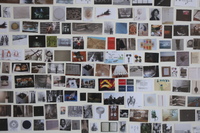
Taxonomy
Visually categorising a selection of my research material (accumulated since 2015). -
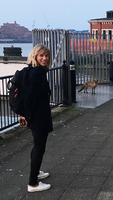
Nina Liebenberg
The researcher who conducted this study and wrote the dissertation, 'The Virus and the Vaccine: Curatorship and the Disciplinary Outsider '(2021). -
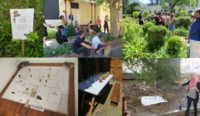
Where the Wild Things Are (Field study)
'Where the Wild Things Are' (21 October – 5 November 2014) explored the political, social and historical narratives embedded in the natural world through investigation, observation, mapping, archival research and art making. The exhibition consisted of various on-site interventions engaging with contemporary and historical spatial dynamics and the significance of Hiddingh Campus. The Egyptian Building (home to sculpture workshops and studios) was built on the site of a zoo established in the late eighteenth century that was replete with lion’s dens and a small lake that supposedly housed a hippo. The campus was also the home to UCT’s first Zoology and Botany building (now the Michaelis Building). This historical perspective highlights both the site’s colonial imprints and its early affiliation with the sciences. The UCT campus is divided into its main upper campus, a middle and lower campus, and a few satellite campuses, of which the Michaelis School of Fine Art and the South African College of Music form part. Students drew on the methodologies of artist/curator Mark Dion, collaborating with specialists from upper campus (entomologists, ornithologists and botanists) and Michaelis Fine Art students, to highlight its natural environment. The interventions occurred on different days, and over a two week period. A calendar was provided to stipulate event times and artwork appearances. Curated by Nina Liebenberg Participating artists: Christopher Swift, Dillon Marsh, Fritha Langerman, Thuli Gamedze, Pippa Skotnes, Alex Kaczmarek, Rone-Mari Botha, Jessica Holdengarde, Fanie Buys, Lara Reusch, Stephani Muller, Tegan Green, Evan Wigdorowitz, Mariam Moosa, C J Chandler, Adrienne Van Eeden-Wharton -
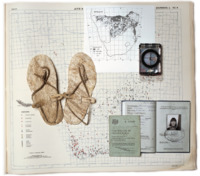
Page 175 of the Curiosity CLXXV catalogue
"The page presents a curated collection of images: a map from the Avian Demography Unit illustrating the distribution of the bataleur Terathopius ecaudatus along the political border, though the bateleur is more frequently found where there is no formal farming; a Ngwato child’s oxhide sandals collected by Isaac Schapera (a British social anthropologist who worked in South Africa and Botswana); a compass; the identification documents of Paula Ensor (previous dean and Professor of Education), who spent time in exile in Botswana; and a Certificate of Registration necessary for movement across borders, all of which are overlaid on top of a large map from the Afrikaans Atlas provided by Rajend Mesthrie of the Department of Linguistics and Southern African Languages that shows the Afrikaans language’s distribution. Contextualising all of these objects in relation to the large map cuts across disciplinary boundaries and illustrates the scope and impact of the colonial and apartheid regimes and their influence on immigration laws, language studies, ornithology and anthropology" (Liebenberg 2021: 193). -
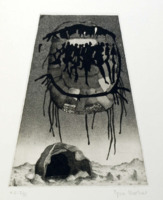
Etching from 'Sound from the Thinking Strings'
"Skotnes’s own visual interpretation of the history and cosmology of the |xam formed the last component of this interdisciplinary endeavour and constituted a visual component that drew together the various strands of disciplinary interpretations and presented a perspective on the |xam life she felt ‘was missing from the other interpretations’ (Skotnes 1991: 30). In these images she drew freely on San mythology, accounts of |xam life recorded by Lucy Lloyd, historical and archaeological research and images from rock paintings in a landscape setting. She writes in her preface that these etchings were direct attempts at ‘inverting the museum dioramas’ in the ethnographic halls close to the exhibition and which, through their display of the San’s body casts, rendered them closer to specimens of biology than as members of a highly developed culture (Skotnes 1991: 52). By creating images that combined shamanistic rituals, entoptic spirals, plants, hunting bags, bows and arrows, snakes, eland-shaped rainclouds, colonists, musical instruments, shelters and therianthropic shapes, Skotnes eclipsed the static narratives of the dioramas and the object labels in the exhibition, placing them in a context in which their metaphysical qualities were celebrated more than their physical qualities. These prints stood in striking contrast to the other exhibits, which framed the San as physical types, and they challenged viewers to confront the reality that the San had a rich history and cultural and social life" (Liebenberg 2021: 157). -
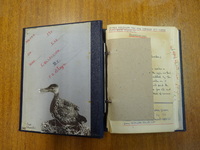
Diary of an oologist
"In 2019, Honours in Curatorship student Nathalie Viruly, who completed her Bachelor of Social Science in Politics and Sociology, was similarly struck by the silence and loss evoked by the [Peter Steyn] collection. Viruly honed in on the moments documented in the notebooks, which capture the loss of life in the reproductive life of these birds and reveal ‘stories of avian tragedy’: Young taken by predator; 1 young accidentally killed; 2 eggs failed to hatch; 2 infertile; Chick disappeared without a trace; Eggs disappeared; Literally cooked by the [corrugated] roof; Nest empty – egg collectors? (Viruly 2018: online). Her focus on these moments in the scientific journal poignantly reveals the conflation between science and emotion and invites the viewer to re-examine hierarchies of loss" (Liebenberg 2021: 219). -
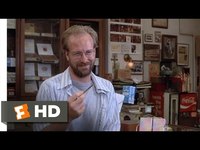
Weighing Smoke
PAUL That’s the man. Well, Raleigh was the person who introduced tobacco in England, and since he was a favourite of the Queen’s – Queen Bess, he used to call her – smoking caught on as a fashion at court. I’m sure Old Bess must have shared a stogie or two with Sir Walter. Once, he made a bet with her that he could measure the weight of smoke. DENNIS You mean, weigh smoke? PAUL Exactly. Weigh smoke. TOMMY You can’t do that. It’s like weighing air. PAUL I admit it’s strange. Almost like weighing someone’s soul. But Sir Walter was a clever guy. First, he took an unsmoked cigar and put it on a balance and weighed it. Then he lit up and smoked the cigar, carefully tapping the ashes into the balance pan. When he was finished, he put the butt into the pan along with the ashes and weighed what was there. Then he subtracted that number from the original weight of the unsmoked cigar. The difference was the weight of the smoke. TOMMY Not bad. That’s the kind of guy we need to take over the Mets. PAUL Oh, he was smart, all right. But not so smart that he didn’t wind up having his head chopped off twenty years later. (Pause) But that’s another story. -
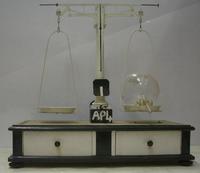
Weighing Air
An example from demonline (UCT Physics Department’s website with descriptions of educational demonstrations). Its descriptions reads: "A spherical flask of about 1 litre is suspended from one arm of a crude chemical balance. It is counterpoised by weights in the other pan, the tap attached to the sphere being open. This gives (roughly) the true weight of the glass. Unhook the sphere from the stirrup, attach the rubber tube from a rotary vacuum pump to the glass tube and evacuate for around 30s. Close tap, and re-attach stirrup. There will now be an upthrust on the flask equal to the weight of air removed, and the weights in the other pan will have to be reduced by about 1.2 g to restore the balance. Open the tap again: the air can be heard rushing into the flask (class must keep quiet), and the flask suddenly descends again". -

Flight Patterns
Flight patterns observed on a bus en route back to London from Oxford on a research trip in 2017. -
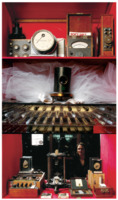
Capitance
"Strategies such as juxtapositioning also served to highlight poetic and emotive qualities in fields not known for encouraging them, as in a cabinet curated by Langerman titled Capitance. This featured a range of instruments from the Physics department used to measure electrical currents (galvanometers, capacitors and Wheatstone bridges); a crystal goniometer measuring crystal face angles and crystal 175 from the crystal collection in Geological Sciences; M.R. Drennan’s models of the human embryo and a wax model of flesh; and a white tutu from the School of Ballet. In combining this selection of scientific instruments with a tutu, Langerman made allowance for the materials to be considered in a more poetic light, inviting the viewer to consider how a grand jeté defies the laws of physics, for example" (Liebenberg 2021: 186). -

Hosts and Carriers
A selection of glass slides of the insects, ticks and worms that are the primary or intermediate hosts or carriers of human diseases. These slides also featured in the 'Curiosity CLXXV' and 'Subtle thresholds' exhibitions, sourced from the Pathology Learning Centre (PLC), where they were originally donated by the secretary of the Department of Microbiology. Dr Yeats identified them as glass photomicrographs and speculated that they were probably made for a special projector used for teaching many years ago. -
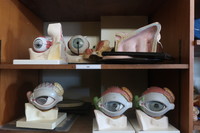
Seeing
Educational models found in the Anatomy workshop: "Borrowing from Herbert Read’s art historical discussion on looking, Digby posits that the biomedical practitioner’s generally critical attitudes were shaped in part by their limited recognition of indigenous medicine during this period – ‘what we see is inseparable from how we see; the eye is not innocent, and vision is partial’ (Digby 2006: 356) and, quoting Read, ‘we see what we learn to see, and vision becomes a habit, a convention, a partial selection of all there is to see’ (in Digby 2006: 356). Accordingly, Digby argues that the Western practitioners would have had, at best, only a partial view of the different medical systems in South Africa during this period (Digby 2006: 357) and probably only to the extent that it was a threat to their own livelihood and authority – as evidenced in the 1928 Medical, Dental and Pharmacy Act that Floyd helped instate" (Liebenberg 2021: 55). -
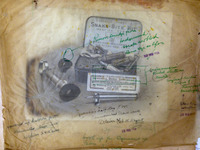
Corrections
Examples of Wellcome's design changes annotated on tracing paper. 1914–1938. WF/M/I/PR/O01/3, 4, 9, 8. Wellcome Collection. -
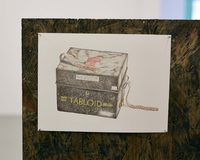
The Landis Museum
A drawing by the artist-curator James Hutchinson (Chapter Thirteen) based on an audio description of the object as art of the Glasgow International Arts festival. "Nina Liebenberg also undertakes a form of object analysis at an institutional border. She spent an afternoon in the strongroom of the University of Cape Town's special collections department, examining an early 20th century medicine box commissioned for a hunting trip in (then) Northern Rhodesia. Such boxes had been essential parts of the British colonial project, and allowed emigres, missionaries and explorers to venture deeper into unknown territory without fear of contracting tropical diseases. Liebenberg’s report from the strongroom acts as a set of instructions for The Landis Museum’s curator to make a drawing of the box, to which he has no physical access". Extract from the 'Exhibition Guide' of the Landis Museum (Chapter Thirteen), Glasgow International Arts Festival, 20 April - 07 May 2018. -
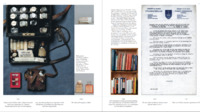
First Encounters
"The caption for the image offered further information about the department in which the medicine chest was located, stating: ‘Black metal travelling medicine chest, containing bottles and packets of medication belonging to Walter Floyd, given to UCT by the Floyd family (Manuscripts and Archives).’ It seemed strange to me that this three-dimensional object would be housed in the Manuscripts and Archives (M&A) department (also known as ‘Special Collections’) of UCT Library, as it hosts collections of ‘printed and audio-visual materials on African studies and a wide array of other specialised subjects, as well as over 1,300 sub-collections of unique manuscripts and personal papers’ (Special Collections 2015). As my italics emphasise, bulkier three-dimensional objects seemed to have no place here. I nonetheless thought it worthwhile to type the words ‘medicine chest’ into the general library search engine, an application called Ex Libris Primo; the search delivered no results" (Liebenberg 2021: 24). -

Curiosity CLXXV
Hiddingh Hall during the construction of the installation of Curiosity CLXXV. -

Miscast (instruments of measurement)
"Along with the guides that regulated practices and protocols to stabilise and standardise an individual’s response to unfamiliar and disorienting sights (Kennedy 2013: 42), the gender, class and ethnicity of the observer were also of importance , as was the use of ‘ever more sophisticated instruments and calculations designed to minimize the intrusion of subjectivity into the reporting of information’ (Driver 2001: 55). By regulating who was doing the viewing, stipulating what should be viewed and how and supplying tools to measure these observations, scientific institutions promoted an authoritative ‘way of seeing’ in the field that differentiated the scientific view from that of the ordinary traveller (Driver 2001: 49)" (Liebenberg 2021: 109). -
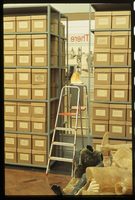
Miscast (taxonomies)
An extract from an email from archaeologist and former head of African Studies, Prof Nick Shepherd (Jan 21, 2021, 11:33 AM): "Disciplinary practices and regimes of care constitute a kind of bureaucratization or governmentality of elapsed time and its material remains and human relationships, placing these remains and relationships under a kind of administration. We think of the elaborate structure of regional typologies and chronologies, the immense work of correctly assigning artefacts and sites to these imagined categories, and the vast institutional apparatus that supports these endeavors – all of which constitute archaeology as a formidable disciplinary enterprise. In the face of this enterprise, the 'many worlds' of local claims to the past have little chance of success." -
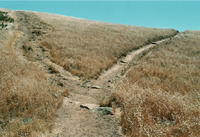
Or
"The processes of digression and diversion have much in common with what the writer Ross Chambers (1999) calls ‘loiterature’. Chambers investigates the digressive, category-blurring genre of writing found in works such as Nicholson Baker’s 'The mezzanine', Paul Auster’s 'City of glass' and Laurence Sterne’s 'Tristam Shandy'. Loiterly writing, according to Chambers, disarms criticism by providing a moving target, shifting as its own divided attention constantly shifts. Criticism depends on the opportunity to discriminate and hierarchise, determining what is central and what is peripheral (Chambers 1999: 9), which this form eludes by resisting contextualisation or singular categorisation. Loiterature promotes sites of endless intersection, where attention is always divided between one thing and some other thing, always willing and able to be distracted, contrasting ‘the disciplined and the orderly, the hierarchical and the stable, the methodical and the systematic’ (Chambers 1999: 10). In contrast to methods of science that seek to stabilise objects within taxonomic systems or that require the formulation of hypotheses to provide direction for experimentation and a basis for concrete outcomes, the processes of curatorship and artmaking revel in rerouting and redirecting and in diversion and digression" (Liebenberg 2021: 286). -

'How Zoology was taught in the past'
The wall text accompanying these charts in the Hunterian museum, Glasgow, reads: "In the late 19th and 20th centuries, before the advent of colour slides that could be projected, the teaching of Zoology depended heavily on the use of wall charts to illustrate lectures. They were hung on a special pulley system at the front of the lecture theatre and, because of their large size, could be clearly seen from the back of the class". -

The Heterotopic Hearts
“On two occasions in 1977, when a patient’s left ventricle failed acutely after routine open-heart surgery and when no human donor organ was available, Barnard transplanted an animal heart heterotopically. On the first occasion, a baboon heart was transplanted, but this failed to support the circulation sufficiently, the patient dying some six hours after transplantation. In the second patient, a chimpanzee heart successfully maintained life until irreversible rejection occurred four days later, the recipient’s native heart having failed to recover during this period. Further attempts at xenotransplantation were abandoned and even now, more than 30 years later, xenotransplantation remains an elusive holy grail despite decades of research.” Extract: Brink JG, Hassoulas J. The first human heart transplant and further advances in cardiac transplantation at Groote Schuur Hospital and the University of Cape Town. Cardiovasc J Afr. 2009; 20(1):31-5 -
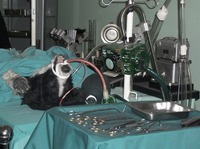
Dogs in the Heart of Cape Town
The guided tour of the museum, which commemorates the first heart transplant performed by Chris Barnard in 1967, starts with a representation of the car accident that provided the heart for the transplant, through to the animal lab where Barnard conducted experiments with over 50 dogs to perfect the technique of heart transplantation. From there one can tour a model of Denise Darvall's bedroom and Christiaan Barnard's office before seeing a recreation of the surgery in the actual operating theaters where it occurred. -
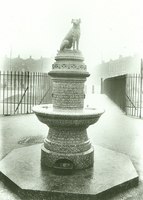
The Brown Dog Affair (1903 - 1910)
On Feb. 2, 1903, English physicians William Bayliss and Ernest Starling, gave a lecture on the digestive system to a theatre full of medical students. Also in attendance were Lizzy Lind af Hageby and Leisa Schartau, committed feminists and anti-vivisectionists. They had travelled from Sweden to enrol at the London School of Medicine for Women, attend lectures around town, and document the practice of vivisection in British universities. During the lecture, a brown terrier was wheeled out, strapped to a board. Starling had already performed one experiment on the dog two months earlier, shutting off its pancreas. This time, Bayliss cut open the dog’s neck and spent half an hour unsuccessfully trying to stimulate the animal’s salivary glands with electrodes. Eventually, he gave up and handed the dog over to a student (Henry Dale, another future Nobel laureate) who stabbed it through the heart, thus ending the lesson. What followed was a court case filed by Stephen Coleridge, a prominent barrister and secretary of the National Anti-Vivisection Society against Bayliss. After four days of testimony, the judge called the women’s account “hysterical” while giving instructions to the jury. The jurors conferred for 20 minutes, then found Coleridge guilty of libel. Anti-vivisectionists commissioned a bronze statue of the dog as a memorial, unveiled in Battersea in 1906. Its plague, which read "Men and women of England, how long shall these Things be?" led to the it being vandalised on a frequent basis. On 10 December 1907, hundreds of medical students marched through central London waving effigies of the brown dog on sticks, clashing with suffragettes, trade unionists and 300 police officers, one of a series of battles known as the ‘Brown Dog’ riots. In March 1910, tired of the controversy, Battersea Council sent four workers accompanied by 120 police officers to remove the statue under cover of darkness, after which it was reportedly melted down by the council's blacksmith. -
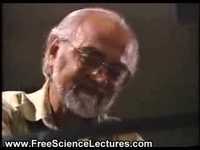
Rats laugh when you tickle them
In 1999, Jaak Panksepp and Jeffrey Burgdorf successfully demonstrated that tickling young rats spurs them into letting out the same ultrasonic giggles they make during play. -

Notebooks 2 – Nest Records
"'Notebook 2 – Nest Records' is part of the Peter Steyn Collection at the Percy Fitzpatrick Institute of African Ornithology (PFIAO) at the University of Cape Town. It resides in the top drawer of a wooden cabinet that is locked and stained with nepheline. The drawer is shared with two other notebooks created by Steyn, the first from his youth, and the latter is focused on birds of prey. It lies beside a copy of Frank B. Smithe’s Naturalist’s Color Guide, a published article by Steyn, two printed documents, attached letters and an envelope of reference photographs. The subsequent drawers are filled with an array of labelled, blown, eggs. Pink. Blue. Burnt-copper. Speckled. Splattered" (Viruly 2019). -

Prrrip-Prrrip, Tseeeep!: the silence of birds’ eggs
"Birds are highly vocal creatures, their songs sound everyday in almost every habitat, even our concrete cities. These calls have been likened to the human capacity for speech, yet the faculty of language has, for most of history, been described as solely ‘human.’ Language forms one of several traits deployed to uphold the constructed divide between human and non-human animals. Oology – the collecting and documenting of wild bird eggs – was an obscure hobby and ‘science’ of the past. Collected eggs were pierced and ‘blown’ of their contents. The perfect shells, beautifully coloured with speckles and intricate patterns, were then placed in vast cabinet collections. Such a birds’ egg collection, collected in Southern Africa during the last half of the 20th century, forms the starting point of this exhibition. Through exploring language and communication in birds, this exhibition aims to create an affective environment for re-evaluating the collecting practices of the past (with its ties to the Euro-Western, human-centered perspective), and for re-imagining current natural history collections. It also aims to … poo-too-eee poo-too-eee, pa-chip-chip-chip per chick-a-ree. Ka-ha, ka-ha, kuh-uk-uk-uk! caw-caw-caw-caw-koodle-yah, loooooo-eee! Pa-chip-chip-chip, per-chick-a-ree!" Wall text of exhibition, Prrrip-Prrrip, Tseeeep!: the silence of birds’ eggs -
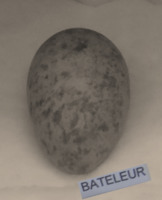
Bataleur egg
Situated in a locked bespoke cabinet in the Niven Library in UCT’s Percy Fitzgerald Institute of African Ornithology, this Bataleur eagle egg is part of a collection of eggs donated by the ornithologist Peter Steyn in 2007. Collected between 1961 and 1977, when Steyn spent time in Zimbabwe, the egg is a link to the iconic stone carved Zimbabwe Birds which once stood proudly on guard atop the walls and monoliths of the ancient city of Great Zimbabwe, believed to be built between the 12th and 15th centuries by ancestors of the Shona. The overall shape of the birds suggests that of a bateleur eagle – a bird of great significance in Shona culture. The bateleur or chapungu is a good omen, the symbol of a protective spirit and a messenger of the gods. -
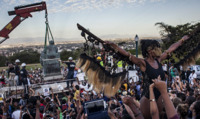
Floyd in Northern Rhodesia
"In 1913, Walter Floyd undertook a hunting trip with a few of his friends to (then) Northern Rhodesia. It was prior to embarking on this trip, that he purchased the No. 254 medicine chest in the Burroughs Wellcome & Co shop in Cape Town. "With the exception of an occasional Portuguese explorer, the area that became known as Rhodesia lay largely untouched by Western intervention until the mid-19th century. It was only after 1851, when the Scottish missionary and explorer David Livingstone entered this terrain, that accounts of it spread to London and further afield (Taylor 2006: 11). However, a significant number of explorers, missionaries and traders began to arrive in the region after the Berlin Conference (1884–1885) (Simson 1985: 7), and in 1890 Cecil John Rhodes, spearheading British imperial interests in the area, secured, through trickery and deception, exclusive mining concessions from the local chiefs for the British South Africa Company (Taylor 2006: 11). By 1895, the area, now renamed Northern and Southern Rhodesia after Rhodes, was proclaimed a British sphere of influence" (Liebenberg 2021: 57) -

Smallpox
"In Kimberley in 1883-4, several leading doctors with links to the diamond-mining industry publicly denied the presence of smallpox among migrant workers, instead diagnosing them as suffering from a rare skin disease. They appear to have done so lest admitting that the dreaded smallpox was raging, which would have affected the supply of labour and materiel and thereby interrupting mining operations. Led by Cecil Rhodes’s friend, Dr Leander Starr Jameson, measures to curb the epidemic were sporadic or, in the mining compounds, non-existent, and cases topped 2000, with mortality at 3.5 per cent of the population. Only when the colonial government eventually called in external doctors to diagnose the disease, was the cover-up terminated and vaccination, fumigation and isolation vigorously pursued. The conspiracy of denial, by retarding action and sowing doubt about the need to be vaccinated, had been responsible for no small percentage of the 700 deaths in the town" (Phillips 2012: 32-33). -

Kimberlite
"UCT was founded in 1829 as the South African College, a high school for boys. The College had a small tertiary-education facility that grew substantially after 1880, when the discovery of gold and diamonds in the north – and the resulting demand for skills in mining – gave it the financial boost it needed to grow. The College developed into a fully fledged university during the period 1880 to 1900, thanks to increased funding from private sources and the government. During these years, the College built its first dedicated science laboratories, and started the departments of mineralogy and geology to meet the need for skilled personnel in the country's emerging diamond and gold-mining industries (Ritchie 1918: 495-496)". -
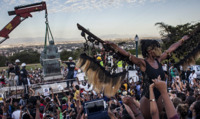
Chapunga - The day Rhodes fell
The character Msezane is portraying depicts the statue of the Zimbabwe bird that was wrongfully appropriated from Great Zimbabwe by the British colonialist Cecil Rhodes. It currently sits in his Groote Schuur estate. -
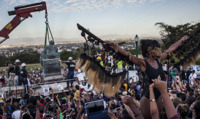
What UCT is not telling its first years
On the 19th of January 2015, an article appeared in the Cape Argus titled 'What UCT is not telling its first years' written by Dr Siona O’Connell, a staff member of the Centre for Curating the Archive, and lecturer at the university. In it she wrote about the absence of transformation in the university, evident in its lack of black academic staff, describing the campus as "mired in unarticulated tensions and divisions, many of them pivoting on race” and “guarded by the Rhodes Memorial – a significant imperialist edifice” that continues to shadow it “in many overt and covert ways” "(O’Connell 2015). In the article she pinpoints that even though, as first years, they will most certainly be greeted by the statue of Cecil John Rhodes overlooking the rugby field during their tour of the campus, their chances of being taught by a black professor during the full span of their degree, will be incredibly slim… -
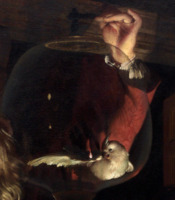
Canary
Sentinel species are used to detect risks to humans by providing advance warning of a danger. The idea of placing warm-blooded animals in a mine to detect carbon monoxide was first proposed by the Scottish physiologist John Scott Haldane in 1913. Canaries (Serinus canaria ) were considered the best sentinel animals for detection of dangerous gases because they were found to be more sensitive than other species evaluated (Pollock 2016:386-387). -
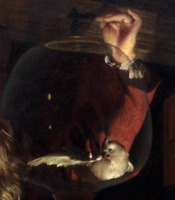
Flight
A chorus of juvenile heartbeats affected by Atrial Septal (ASD) and Ventricular Septal Defects (VSD), Patent Ductus Arteriosus(PDA), and Aortic Valve Stenosis (AVS), transposed to a higher frequency to simulate birdsong -
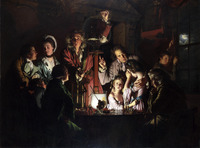
An Experiment on a Bird in the Air Pump
In Joseph Wright’s 'An Experiment on a Bird in the Air Pump' (1768), he depicts the re-enactment of Boyle’s famous experiment. Contrary to the restricted viewing of this experiment in the confines of Gresham College by the gentleman of the Royal Society, this audience includes a variety of individuals of different ages and gender, exhibiting a mixture of emotions: a young girl worriedly watches the fate of the bird, while another is comforted by her father, seemingly too upset to view the rest of the experiment; a young boy and middle-aged man look on with absorption, while two young lovers only have eyes for each other; lastly an old man meditates on a skull in a jar, and the scientist stare out at the viewer, and not at the experiment. -

Modest_ Witness@Second _Millenium
Boyle's 'New Experiments Physico-Mechanical Touching the Spring of the Air', which describes experiments with an air-pump, recounts a demonstration attended by high-born women at which small birds were suffocated by the evacuation of the chamber in which the animals were held. Since the ladies interrupted the experiments by demanding that air be let in to rescue a struggling bird, Boyle reported that “to avoid such difficulties, the men later assembled at night to conduct the procedure and attest to the results” (Haraway 2004: 232). -
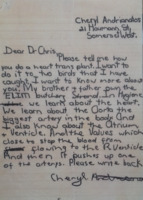
Heart of Cape Town Museum
"Dear Dr Chris, please tell me how to do a heart transplant". I want to do it to two birds that I have caught. My brother and father own the ELIM Butchery Strand. -
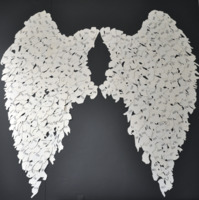
Wings
512 lasercut hands derived from images of healing: 2500 BC - 2000 AD. -

Heart of Cape Town Museum
Christiaan Barnard did forty-eight trial transplants with dogs before he undertook such an operation with a human being. -
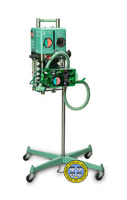
Bird Mark 7 Respirator
Dr. Bird invented a number of popular medical devices that were used to care for patients with breathing problems. During WWII he served in the Army Air Corps where, in addition to training and transport assignments, he studied aircraft and respiratory and cardiovascular problems at high altitude. Two devices that he produced during the war went into the design of his first commercial ventilator, the Mark 7 Respirator. Dr. Bird’s respirators and anesthesia ventilators have been used during many of the first human surgical procedures. Among these were the first open heart procedure and the first liver transplant. -
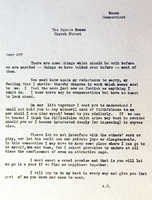
Amelia's letter
Amelia Earhart sat down on the morning of February 7th, 1931, and penned this letter to her publicist and future husband, George Putnam: "Please let us not interfere with the others’ work or play, nor let the world see our private joys or disagreements. In this connection I may have to keep some place where I can go to be myself, now and then, for I cannot guarantee to endure at all times the confinements of even an attractive cage". -
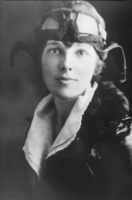
Earhart's pilot license #6017 photo
-
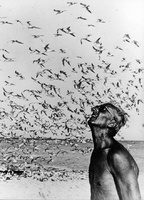
The Sea Birds of Isabella
Aired between 1968 and 1976, 'The Undersea World of Jacques Cousteau' was a documentary television series about underwater marine life. It was directed by Alan Landsburg and hosted by French filmmaker, researcher, and marine explorer Jacques Cousteau. In the 33rd episode of the series, titled 'The Sea Birds of Isabella', the crew journeys off the coast of Mexico to an island to study its tropical birds. Three years after it was shown, Cousteau's son, Phillipe (then aged 38) died trying to land his seaplane, called the Flying Calypso, on the Taos River in Portugal. -
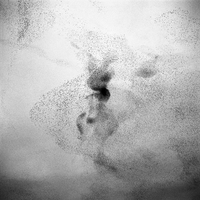
Murmeration
Heart murmurs are sounds – such as whooshing or swishing – made by turbulent blood in or near the heart. When doctors listen to a child's heart, what they usually hear is a simple rhythm: "lub-dub, lub-dub, lub-dub..." Sometimes, they'll hear an extra sound in between the lub and the dub. That extra sound is called a heart murmur. Heart murmurs can be harmless or abnormal. In the case of the latter, it is usually the result of abnormal blood flow through the heart caused by a heart valve not working properly. -

L’Ellipse
In the triple–screen projection 'L’Ellipse' (1998), Pierre Huyghe slowed a jump cut from Wim Wenders’s 1977 film 'The American Friend' and expanded it by adding his own footage of the film’s leading man, Bruno Ganz, now older, acting out a scene that the film itself skips – a walk across a city, from one apartment to another, between important phone calls. -
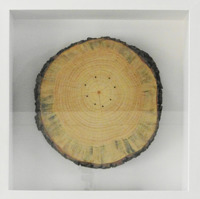
1975 (Invasive Species)
1975 (Invasive Species) stems from a historical and botanical enquiry. In 1975, after attaining independence from Portugal, the civil war broke out in Angola. In that same year, the South African Defense Force under the authorization of Vorster, intervened in the war – an intervention which formed part of an ongoing period of conflict in South African history, known as the Border Wars. From a botanical point of departure, the cluster pine (or Pinus Pinaster) is native to Portugal. In South Africa it is seen as invasive, competing with and replacing indigenous species. The work consists of a cross section of cluster pine used as a target practice unit, into which the artist shot a ring of R4 assault rifle bullets – aiming at tree ring 1975. -

Holes
A virus attacks a cell by attaching itself to the outer wall. It then uses a specialized protein to digest a small hole in the wall of the cell and inject its nucleic acid molecule into the cell's cytoplasm. -
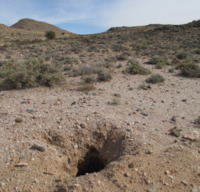
Holes
The landscape of the Karoo and the Northern Cape – the land of the |xam – is rich with holes in the ground. Below the surface of the earth burrowing animals navigate their way through the roots of grasses and shrubs, small trees and creepers. Holes are made and inhabited by scorpions and spiders, mice and shrews, suricats and mongooses. One of the most energetic of burrowers is the anteater whose holes, in places, transform the landscape. Anteaters are such active diggers and their holes so numerous that abandoned burrows are quickly occupied by bat-eared foxes, hyenas, hares, civets, bats, jackals, owls and porcupines (Skotnes 2010: 26) -
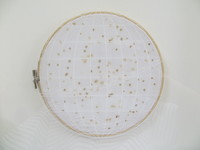
Amelia
"We are on the line 157 337. We will repeat this message. We will repeat this on 6210 kilocycles. Wait." On July 2, 1937 Model 10 Electra 1055 piloted by Amelia Earhart with navigator Fred Noonan took off from Lae Airfield, New Guinea and was never seen again. Earhart's last radio message was estimated to be within 200 miles of her destination Howland Island. Burn holes made with a magnifying glass on a handkerchief which corresponds to the positioning of the stars as observed from the place, date and time Amelia Earhart sent her last broadcast. -
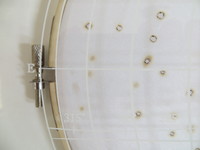
Amelia (detail)
"We are on the line 157 337. We will repeat this message. We will repeat this on 6210 kilocycles. Wait." On July 2, 1937 Model 10 Electra 1055 piloted by Amelia Earhart with navigator Fred Noonan took off from Lae Airfield, New Guinea and was never seen again. Earhart's last radio message was estimated to be within 200 miles of her destination Howland Island. Burn holes made with a magnifying glass on a handkerchief which corresponds to the positioning of the stars as observed from the place, date and time Amelia Earhart sent her last broadcast.


